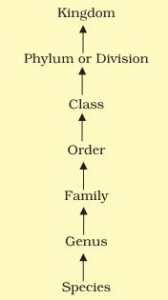The Living world MCQ questions/ Objective questions with answers Class 11 chapter 1
1. The characteristic of a living object is:
- a. Growth
- b. Reproduction
- c. Ability to sense the environment and respond accordingly
- d. All
2. In animals, the growth is seen only up to a certain age; however, plant growth occurs:
- a. Intermittently on external events like cut, abrasion.
- b. Continuously throughout their lifespan.
- c. Only up to a certain age, just like animals.
- d. None.
3. In higher plants and animals, growth and reproduction are:
- a. mutually exclusive events.
- b. Same thing.
- c. Co-occur.
- d. None
4. Select animals which reproduce by Asexual means :
- a.Protozoa.
- b. Fungi.
- c. Porifera.
- d. Both a and b.
5. Hydra, protozoa, and mold reproduce asexually by :
- a. Budding, Binary fission, Fragmentation respectively.
- b. All by Fragmentation.
- c. All by Budding.
- d. None.
6. Animals that show true regeneration is:
- a. Platyhelminthes.
- b. Nematahelminthes.
- c. Arthropods.
- d. None.
7. The biological name of humans is
- a. Homo sapiens.
- b. Homo erectus.
- c. Homo luzonensis.
- d. None.
8. Binomial nomenclature was given by:
- a. Ernst Mayer.
- b. Carolus Linnaeus.
- c. Aristotle.
- d. None.
9. The botanical name is a two-word name with genus and species. The correct representation of mango in a biological term is:
- a. Mangifera Indica.
- b. Mangifera indica.
- c. Mangifera indica.
- d. mangifera indica
- e. b and c.
10. Why we need to classify organisms:
- a. Because studying each organism is cumbersome as the number of organisms is vast.
- b. Because classification makes them easy to relate.
- c. It is easy to find useful trends and evolution trends when we classify them.
- d. All.
11. Hierarchy of taxonomic classification is:
- a. Species » Genus » Family » Order.
- b. Species » Genus » Order » Family.
- c. Species » Order » Family » Genus.
- d. None.
12. A species is a group of similar organisms which can:
- a. Interbreed.
- b. Interbreed and produce viable offsprings.
- c. Both.
- d. None.
13. Can we categorize humans into sub-species?
- a. Yes.
- b. No.
14. A herbarium is a collection of organism samples:
- a. In a museum.
- b. In dried form in files for the record purpose.
- c. In the garden as living.
- d. None.
15. The biggest herbarium of India is at:
- a. The herbarium of Forest Research Institute, Dehradoon.
- b. Indian Botanical garden, Kolkata.
- c. None.
16. Biggest herbarium in the world is situated at:
- a. India.
- b. The United States.
- c. United kingdom.
- c. France.
17. The largest botanical garden of India is located at:
- a. Forest Research Institute, Dehradoon.
- b. Indian Botanical garden, Kolkata.
- c. None.
Next:
- The Living world MCQ Biology Questions
- Biological Classification MCQ Questions with answers
- Plant Kingdom MCQ Biology Class Eleven
- Animal Kingdom MCQ Biology
- Morphology of Flowering Plants MCQ
- Anatomy of Flowering Plants MCQ Biology
- Structural Organisation in Animals MCQ
Answers:
| 1.d | 7.a | 13. b |
| 2. b | 8. b | 14. b |
| 3. a | 9. c | 15. b |
| 4. d | 10. d | 16. c |
| 5. a | 11. a | 17. b |
| 6. a | 12. b |
The Living world MCQ questions/ Objective questions with answers Class 11 chapter 1
Ref: Chapter 11, NCERT.

Nice paper
these questions are very nice thanks
Thanks
Very interesting and useful for revise the whole chapter…Thanks a lot
Thank you so much
Thanks a lot keep uploading questions of all chaptere it helps us to understand how much we have read and remembered…………
It was so helpful.
Thanks
Nice site to study or revise the whole chapter
This is very important question thanks for that because today I can understand how much I did
Thanks so much for this type of McQ .
I request you to please provide McQ of all chaptes of all sub subject of science.